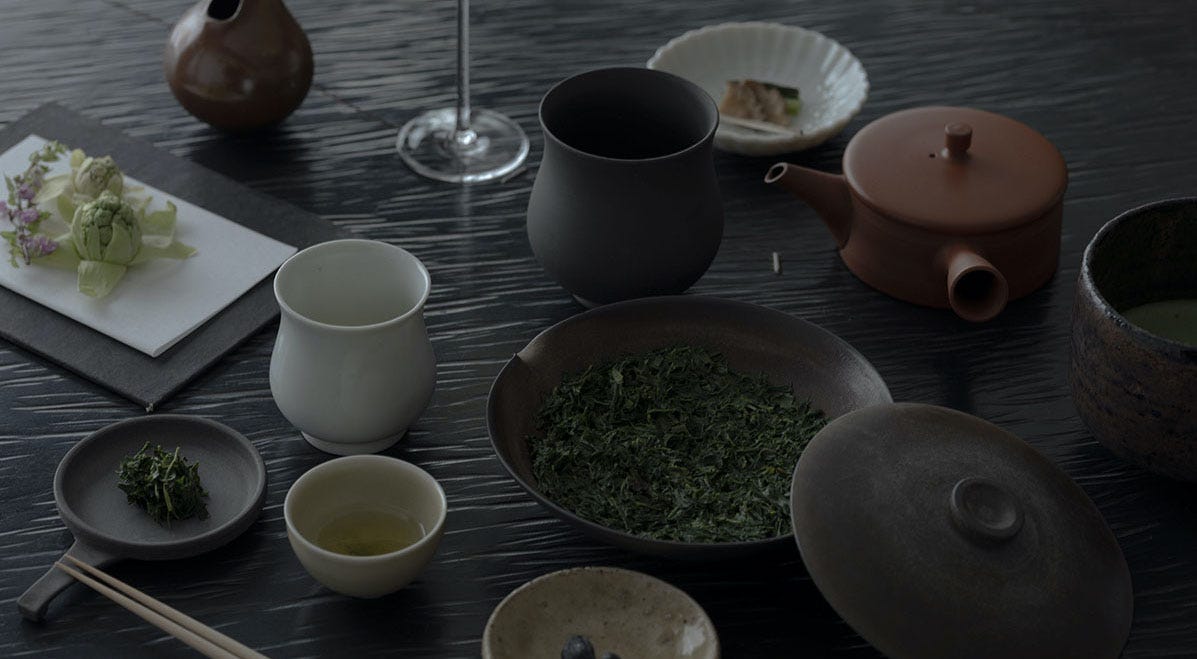Tea as Art in Japanese Culture
Tea is more than just a sip; it's a lively dance of tradition, mindfulness and harmony. Let's explore the multifaceted experience of tea in Japanese culture 🍵
"The ceremony of tea is a moment of pure tranquillity in a chaotic world," as expressed by Daisaku Ikeda, captures the essence of the Japanese tea tradition. But how did it all start in the first place?
Initially exclusive to elite Zen monks and noble warlords, it evolved into a practice emphasizing harmony, respect, purity, and tranquillity. The Japanese tea ceremony aims to foster connections between the host and guest while promoting inner peace.
The rich history of tea in both Chinese and Japanese traditions traces its roots back to an Indian sage, the founder of Chan Buddhism.
Myths say that while spreading his new doctrine, Bodhidharma meditated at the Shaolin temple, facing a wall for nine years. As he neared enlightenment, he fell asleep, missing the final step. In frustration, he tore off his own eyelids, and from the discarded lids, a bush emerged — the origin of the tea plant. A little bit spooky, right? 👀
Stop by Here! 🫖
Sakurai Japanese Tea Experience in Tokyo…
You can taste different Japanese teas with delicious meals. The owner Shinya Sakurai dedicated his 14 years to pursuing mastery in the art of tea.
You should make a reservation because of the limited area in the wooden counterbar. The menus change in the daytime and the bar time.
The Japanese Tea Ceremony, known as Chanoyu, serves as a quintessential embodiment of the aesthetic principle of wabi. Rooted in the value of appreciating beauty and simplicity in everyday things, wabi has found its profound expression in the meticulous and stylized practice of the tea ceremony. The tea master Sen no Rikyu not only emphasized the preparation and serving of tea but also introduced the use of carefully arranged flowers (ikebana) to create a serene atmosphere during tea consumption.
Drinking tea is a spiritual enjoyment and an art that nourishes the mind. The act of sharing tea is fundamental, reflecting the principles of the tea tradition known as Chanoyu. The ceremony embodies self-awareness, generosity toward others, and a reverence for nature. They even have a beautiful Japanese phrase: "Cha-nomi-tomodachi," which translates to the "friend that you drink tea with."
Who is your “Cha-nomi-tomodachi” - that special friend you share tea with? ☕Share this newsletter with them and spread the warmth!🔥
Beyond the Tea Rooms
One distinctive feature of tea rooms was their small doorways. This design choice symbolizes equality, showing that all participants are of equal status once inside. Some historians suggest that the small doorways also served to prevent swords from being brought into the tea room, reinforcing the notion that rank and occupation were to be abandoned during tea drinking-sessions.
There are two types of tea used in these sessions: thin tea (usucha) and thick tea (koicha). Thin tea gatherings involve individual servings, while thick tea gatherings symbolize unity among participants, sharing a single bowl. The presentation and reception of the tea bowl hold great significance, with the host choosing its most beautiful side.
Book of the Week 📚
The Book of Tea by Okakura Kakuzo focuses on the cultural significance of tea in Japan and its influence on art, spirituality, and daily life. It was published in 1906, which was a time when Japan was opening up to Western culture.
Konnichiwa! 🎌
Have a visit to the world's busiest city? You can now walk through the streets of Tokyo with audio tours on Piri Guide! To have a real-time Japanese tea experience with Asian cuisine in the city sounds exciting and tasty… 🤤
One Last Thing…
Thanks for sharing your thoughts! ❤️ Wishing everyone a pleasant weekend. See you next week! 👋🏼







